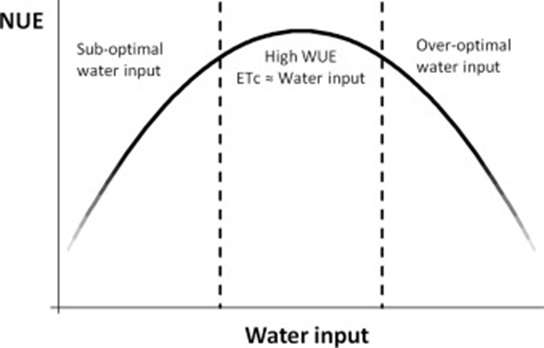Simultaneous water and nitrogen use can enhance sustainability

The results of a study carried out by two researchers from the Universidad Politécnica de Madrid show that management practices oriented toward reducing nitrogen losses and maintaining farm productivity should rely on optimizing nitrogen and water inputs at the same time. The coordinated improvement of both elements on agriculture has more productive and environmental advantages than separately.
Water and nitrogen availability are, globally, the most limiting crop growth factors. These two elements have a fundamental effect on food sovereignty of many regions and on the reduction of the gap between the potential food and the actual food produced in the world. Thus, problems caused by overuse of nitrogen, such as nitrate contamination of natural water reservoirs and increase of greenhouse gases in the atmosphere are mostly influenced by water management.
In addition, it has been proven that strong interactions exist between the efficiency of water use and nitrogen use in most cropping systems. Thus, the practices that seek to improve both efficiencies simultaneously are more successful than those that aim to optimize each element separately.
This study assesses seven practices to improve both elements at the same time in cropping systems. Firstly, when there is crop water deficit, the use of nitrogen has to be adjusted to the actual demand of the stressed crop since the plant will grow only as far as the most limiting factor allows it (water in this case); thus, the rest of the nitrogen remains in the soil, ready to disappear from the system.
Secondly, another good practice is to improve water management in irrigated crops since excessive water use leads the loss of water and the dissolved nitrogen it carries.
Thirdly, researchers suggest the use of "fertigation," the application of dissolved nutrients into irrigation water .This technique has a great potential to adapt the timely demand of water and nitrogen per plant.
Soil mulching is the fourth technique. When this technique is properly applied using remains of previous crops or synthetic materials, farmers prevent water loss caused by direct evaporation of the soil. Additionally, soil mulching can favor the conditions to achieve a higher mineralization of soil nitrogen and it can also increase water infiltration reducing the loss of both water and nitrogen caused by soil erosion.
The fifth technique suggests changing nitrogen dosage taking into account the nitrogen provided by mineralization from soils and organics. Thus, synthetic fertilizer can be totally replaced in some cases, for instance, when soil has appropriate humidity conditions.
Another technique is based on the use of species and crops that can better adapt to the cycles of climate and soil, searching for species more adapted to the water available in each region, combining species with depths of roots capable of taking water and nitrogen where others cannot, including cover crops that can prevent the loss of nutrients and that can be used for soil mulching and green manure in the future.
Finally, the seventh practice is the monitoring of water and nitrogen availability with remote proximity sensors. There are many affordable sensors that allow farmers to measure the physiological state of the plant and the availability of soil water. Thus, the fertilization and irrigation forecasts can be adjusted according to the deficiencies observed.
In short, the researchers of the study say, "The crop techniques addressed to reduce the loss of nitrogen, identifying the most effective practices in every case, will contribute the improvement of environment worldwide."
More information: Miguel Quemada et al. Approaches for increasing nitrogen and water use efficiency simultaneously, Global Food Security (2016). DOI: 10.1016/j.gfs.2016.05.004
Provided by Universidad Politécnica de Madrid


















